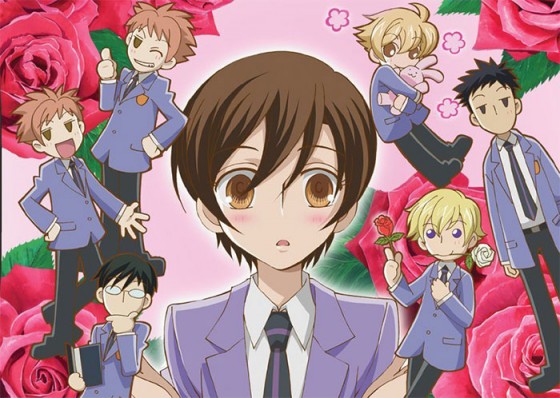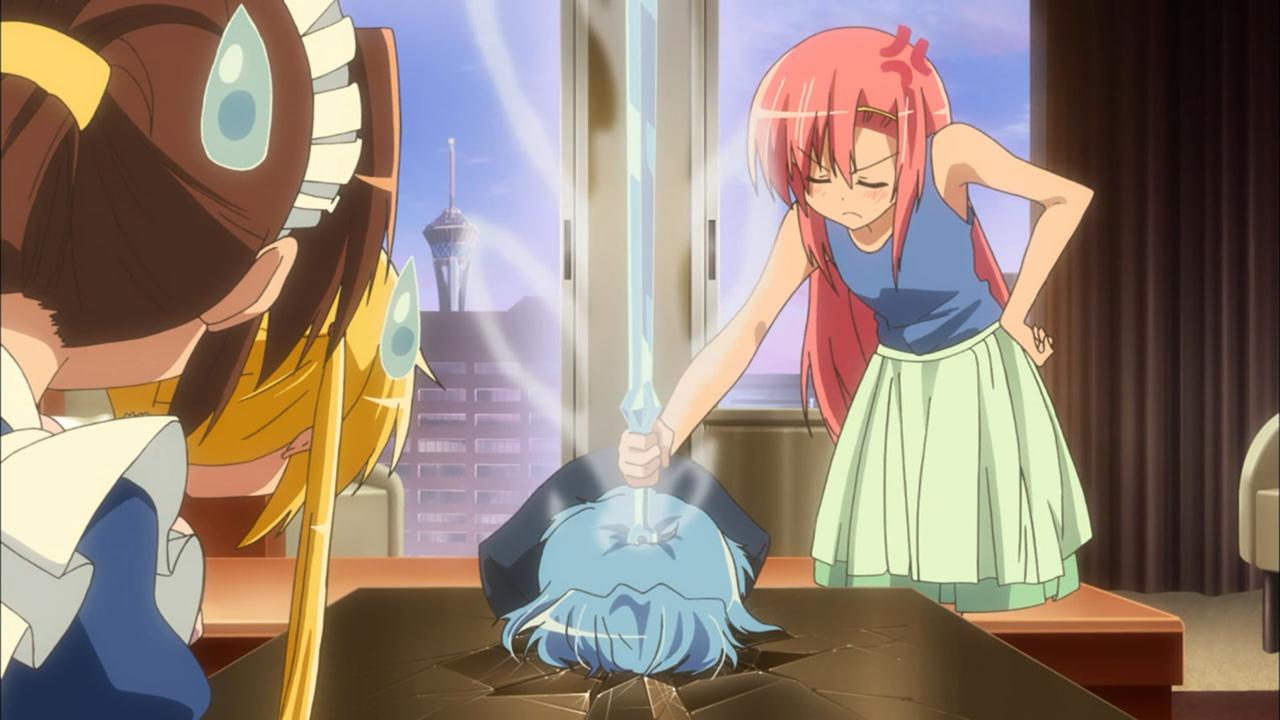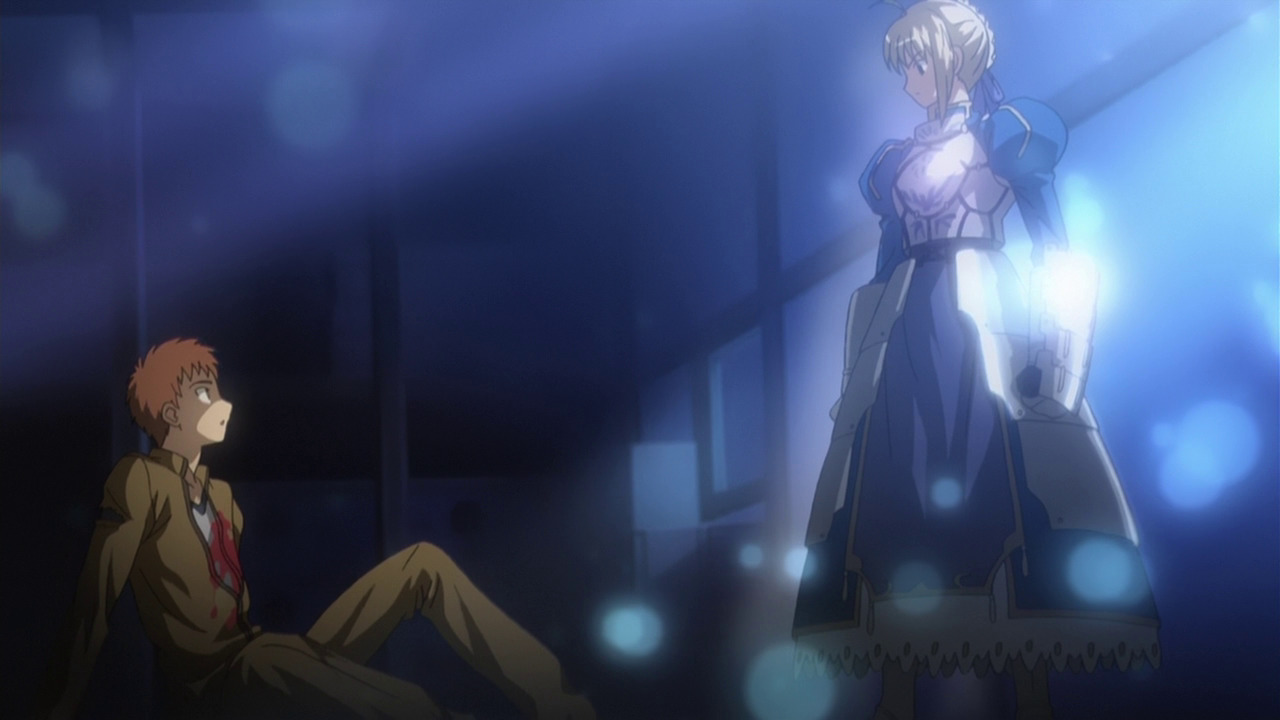The Magical Girl Lyrical Nanoha franchise has been interesting when it comes the Magical Girl genre of anime. The original series was something of a conventional Magical Girl vs. Dark Magical Girl show, like the Pretty Cure franchise, with the difference being that the battles between Nanoha and her opposite number, Fate, played out a lot like a superhero fight.
The later series played up this concept, with the second series, Nanoha As setting up a battle of superhero teams (or superhero and super-anti-hero teams), with Nanoha, Fate, Arf, taking on a team of opponents with more-or-less similar abilities. The series also played down the school adventure side of the traditional magical girl story, with Nanoha’s school friends, who were very much a prominent part of the narrative for the first series, being pushed to the side very early.
Nanoha StrikerS dumps the “civilian life” side of the equation entirely, with series protagonists Nanoha Takamachi & Fate Testarossa working as, basically, state-sponsored superheroes, and spending all of the series well away from Earth. Previous series had introduced the Time Space Administration Bureau (or TSAB), the bureaucracy behind it, and that the government that it answers to is based on a world called Mid-Childa. StrikerS spends almost the entirety of it’s runtime there.
The premise of the series is that it’s set a little over 10 years after the events of Nanoha As, which would put Nanoha and Fate in their early-to-mid 20s. Nanoha and Fate have become part of a special unit as part of the TSAB, lead by Hayate, the befriended antagonist of As. The objective of the unit is to hunt down Lost Logia, lost pieces of magitech which can be incredibly dangerous in the wrong hands. As part of this unit, Nanoha, Fate, and the Wolkenritter (Hayate’s now-less-dark Magical Girl superteam from As), are also training another team of, for lack of a better term, Magical Superheroes.
From a narrative position this setup puts the audience in an amazing position to see how the protagonists who we’ve followed through the last two series have matured, and it’s certainly successful at that. In particular, Fate and Nanoha have become the de-facto parental figures for two kids who are now part of their unit, Erio and Caro. While they were not actually adopted by Fate, they were adopted by Fate’s stepmother – Lindy, with Fate helping to raise them in a maternal/older sister role.
This leads to Fate & Nanoha. The writing of the first two series loosely implied that the two were homosexual. StrikerS, on the other hand, strongly implies that the two are in relationship with as strong a subtext as you can get without actively crossing over into text – like, stronger than the handhold in Legend of Korra.
The new protagonists, Erio, Caro, Subaru, and Teana, are generally well written, and have really strong chemistry. Erio and Caro, and Subaru and Teana have some romantic chemistry, which is read stronger for me with Subaru and Teana.
The overall story of the series serves to bring back together some plot threads going back to the original series. Hayate’s team, Riot Force 6, ends up coming into conflict with a mad magical scientist named Jail Scaglietti, who has been engaging in genetic engineering to create artificial mages and cyborgs for combat. The research he’s working on is similar to that that was done by Fate’s birth mother, Precia, in her attempts to raise her deceased daughter, Alicia from the dead – work that lead to the creation of Fate. The level of conflict here is nice and personal, and gives the conflict a strong direct tie to our protagonists that makes up for the lack of any real civilian life our heroes have.
That said, the animation doesn’t quite back up the story. This is a 2007 anime from studio Seven Arcs, who animated the earlier Nanoha series, along with the Triangle Heart OVA, and somehow, I can’t quite say why, but the animation here doesn’t feel quite right. The Digicel animation feels a little overly flat and stilted, particularly towards the end of the series. Now, it’s been awhile since I watched the first two shows, and maybe they’re just as bad, but with this series it feels like it stands out more, especially towards the end of the show.
There are also some weird decisions with the animation that seem to make little sense. The show cuts around some early stages of some very emotionally significant fights later in the series, showing the aftermath of the action instead of the action. Now, when we hit the climaxes of those fights, we see the full conclusion, but with this particular fight, the early stage was really important, and it was really disappointed with the fact that we didn’t get a chance to see it.
There are some issues with the costume design. The designs for the TSAB staff, and Riot Squad 6 are fine. However, there is Jail Scaglietti’s team of combat cyborgs, The Numbers. They wear these skin-tight outfits that leave as little to the imagination as the animation budget will allow, without actually showing skin. It’s the kind of outfit that 90s comics were mocked for putting female characters in, with boob socks and precisely defined butt-cheeks. The plugsuits in Evangelion didn’t go nearly as far in their form-fitting nature.
I enjoyed the show enough to finish it, but it was the characters who kept me coming back for the rest of the show, and in particular the fact that I’d come to appreciate these characters and their stories through the last two series. If it wasn’t for the writing and the characters, I probably would have dropped the show due to my issues with the animation.
That said, with how the show wraps up, considering the fourth series, Nanoha Vivid (focusing on a character that Fate and Nanoha adopt in this series), has not yet gotten a US release, StrikerS does make for a decent conclusion to the Nanoha series.
Nanoha Strikers had gotten a brief DVD release by Bandai USA, and is now available for streaming through Amazon Prime as part of their Anime Strike package.














